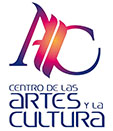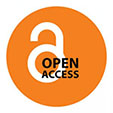The trace of the identity of the sound ecosystem through the register as a material of contemporary art
DOI:
https://doi.org/10.33064/8ais4633Keywords:
Sound, Identity, Ecosystem, ArtAbstract
My doctoral thesis entitled The identity of sound ecosystems as a basis for artistic creation (2021) proposes that the identity of the sound ecosystem is formed by a set of systems that form ephemeral spatio-temporal interrelationships and are manifested in a certain territory and moment, perceived subjectively, in our case, by the artistic subject. The understanding of this identity, from the point of view of art, is useful to know the complexity of the multiple sound dimensions of a place and in turn, enables the creation of new sound identities. The aim of this paper is to offer an analysis around the research question: how does the recording of a sound indicate something about the identity of the ecosystem? and to deepen on the concept of sound recording as a trace and material in the relationships between ecosystem, sound, music and art. Starting from the concept of sound record, opposite or differentiating it from the concept of Soundscape (Schafer [1977] 2013; Truax, 1984; Chion, 1991), cases of works that converge in the construction of the identity of sound ecosystems are analyzed. The analysis is based on complexity theories (Stengers 2005; Latour 2008; De Landa 2008) and some case studies (Lozano-Hemer 2014; Perini, 2018; Garaicoa, 2006-2017; Jo SiMalaya,2019) as well as the own work "Uraren kantuak" (2017), which results from a series of processes in the field practices carried out during the doctoral thesis, one of them in the source of the Zadorra River in Alava, Basque Country in 2018. In this work, we experiment with different microphones at the time of recording, and later with the editing and manipulation of the sound record in post-production, build a new identity from the sound trace of that place. On the other hand, the work "Recorridos cantados" (2016) is shown, where the sound recording is used to record an action synchronized with the recording, during a walk along a route in the city of Bilbao, Basque Country. With an approximate duration of thirty minutes, the recording was made with binaural microphones placed in the form of a headband, simulating the reception of the ear. In this way, while walking, melodic, percussive and sometimes sung sounds were produced. Both works converge in the identity of the sound ecosystem allowing us to observe how the methodology of the thesis is applied in the artistic practice. The methodology is based on a typology of artistic attitudes towards the ecosystem in which three forms of relationship are established between the artistic subject and the ecosystem through sound: 1) more active, 2) less active and 3) hybrid.
Two works will be presented as part of the experimental field practices. The first work is created by adopting a less active and hybrid attitude at the moment of recording the place. On the one hand, it is a less active attitude because it seeks silence and minimal intervention of the recording subject. On the other hand, a hybrid relationship is established in the conjunction between the less active attitude, increasing the degree of activation through the manipulation of the sound files (post-production), resulting in a series of sound creations that document and reinterpret the identity of the sound ecosystem of the place. In the case of the second work, a more active attitude is adopted, since, on the one hand, when the tour is sung, the space is being activated through sound in a direct way, and the recording, in turn, results from a hybrid attitude between both forms of relationship (less active and more active), because the recording is part of the action and serves as a record to document it. In this work, there is no editing and the focus of the intervention is on the recording itself.
The results of the analysis serve to deepen on the sound footprint, records and materials around a place, to know and / or recognize it, and also on how these can be explored in the context of contemporary art through sound. The application of this methodology within the artistic practice offers multiple possibilities in the field of creation, establishing links with other fields of research.
Downloads
Downloads
Published
How to Cite
Issue
Section
License
Copyright (c) 2024 Jaime Alejandro Cornelio Yacaman

This work is licensed under a Creative Commons Attribution-NonCommercial-NoDerivatives 4.0 International License.
The copyright of the articles rests with the authors, who by publishing them agree to do so under the Creative Commons Attribution-NonCommercial-NoDerivatives 4.0 International license.













